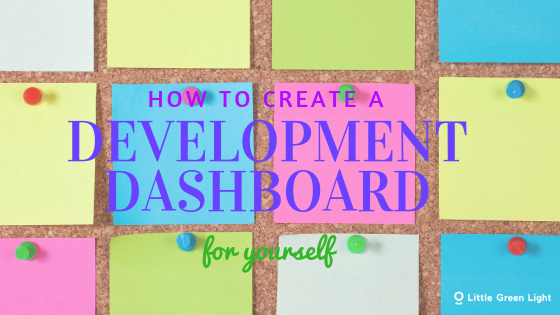Little Green Light is a cloud-based donor management system for fundraisers.
Subscribe to get our latest product updates, best practices and tips to grow your nonprofit.

Fundraisers typically use development dashboards to share fundraising activities and progress toward goals with board members and development committee members. Common information tracked on monthly development dashboards can include donor retention, number of new donors, grant applications submitted and percentage approved, and year-to-date amounts raised through various appeals and events.
Why not tweak this tool to create a monthly dashboard for yourself? By creating a dashboard for your own use, you’ll be aware of what variables are helping or hindering your ability to be an effective, proactive fundraiser.
Every fundraiser’s dashboard will be different, but here are some ideas for what to include on your own monthly development dashboard:
Keep track of your efforts to engage board members and/or committee members in fundraising activities like making thank-you phone calls to donors, adding handwritten notes to appeal letters or acknowledgment letters, or fundraising training exercises. When you record the tasks you’ve assigned to specific board members as well as the completion of these tasks, you’ll be in a good position to evaluate board engagement.
Why? It’s hard to be a successful fundraiser if you’re working in isolation, and board members can play a vital role in achieving the organization’s development goals. By monitoring assignments given alongside board members’ ability to complete those assignments, you can ensure the organization has a strong core of board members involved in philanthropy.
You probably have a good idea of how you’ll spend the majority of your time every month. Ahead of a large event, your focus might be soliciting and managing event sponsorships. Jot down your expected focus in advance and then at the end of the month, check to see if that’s really how you spent the majority of your time. Make notes of anything unusual that caused you to shift your focus.
Why? Documenting these details may demonstrate that certain tasks take more or less time than anticipated, which will help you plan for the future. It could also reveal some issues that need to be resolved in order to work efficiently and effectively. This can be especially true for fundraisers in small shops who wear many hats. This exercise helped me realize that the amount of time I spent dealing with a misbehaving copier and printer in a prior job was curtailing my ability to follow up with event sponsors in a timely manner.
Have you met with a donor over coffee to tell them about an expanded program, or made a phone call to a long-time donor to express gratitude and ask them for their insights? Monitor your personal interactions with donors beyond newsletter mailings and appeals, and be aware of donors with whom you should spend some time.
Why? Building relationships is key to retaining donors and boosting support for your organization. Keep a record of your stewardship efforts in a system like Little Green Light and you’ll be able to measure the results of your stewardship efforts, as well as make a plan to engage with donors who are due for some personal interaction.
When you review your organization’s development plan, do any aspects of it make you feel uncomfortable? Maybe the plan includes a gala but you don’t have much experience with event planning, or the year-end appeal is looming and you need to hone your writing skills. You might want to add a planned giving component but don’t know where to start. Be aware of the skills you want or need to expand, and record the steps you’ve been able to take toward those goals.
Why? Unless you’re intentional about it, your skillset as a fundraiser won’t grow and you may wind up feeling bored or stuck in your role. Moreover, the fundraising goals of your organization could suffer for it. There are lots of affordable (even free!) resources out there to help you develop your skills—look for webinars, tutorials, and local workshops on topics of interest. Make a point to prioritize your own growth, and your organization will reap the benefits!
Creating a dashboard for yourself is a simple way to track progress and priorities of your own, as well as keep an eye on how your time is spent, so that you can be most effective in helping your organization reach its goals.
Comments are closed.
Comments are closed.
Ready to try LGL? Get your first 30 days free. No credit card required.
Can you share the steps to customize the LGL dashboard? The current one only pulls in set reports and so I have to click on the report number and then adjust it to only pull in gifts not pledges. I would like to be able to create a custom dashboard. I need to improve my skills and knowledge in this area! Thank you for a great article!